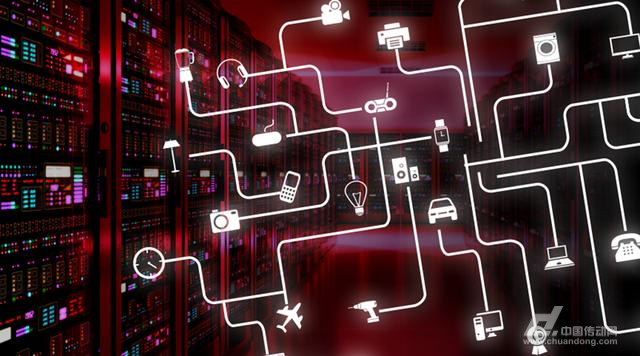At present, in the world, the construction of smart cities is in the process of conception and gradual landing. The giants of technology and investment are the important participants in this new wave. In October 2017, Sidewalk Labs, an urban innovation division of Alphabet, announced that it will cooperate with the Canadian city of Duolun to transform a deserted waterfront of the city into a high-tech new district called Quayside, and hopes that the smart city project can become globally sustainable. The model of an interconnected city. The project will transform more than 800 acres of abandoned industrial land, and the Internet of Things (IoT) will play a vital role in it, and will become the basis for the development, maintenance and development of a sustainable lifestyle. From intelligent transportation systems and automated driving buses, to real-time air quality monitoring, and smart meters that measure utility usage, much of the data these innovations require will be processed at the edge of the network, not the cloud. This is the application of "edge computing" in smart cities. 1. What is "edge computing"? Edge computing refers to the use of an open platform that integrates network, computing, storage, and application core capabilities, close to the source or data source, to provide services nearby. Edge computing comes with the development of the Internet of Things. For the Internet of Things, breakthroughs in edge computing technology mean that data analysis and control can be achieved through local devices without the need to deliver cloud processing. This will greatly increase data processing efficiency, reduce cloud load, and provide users with faster response. At present, there are about 23.14 billion IoT devices in use worldwide, and this figure will rise to 31 billion within the next two years. By 2025, 80 billion devices are expected to be used and collected. The amount of data generated can reach 180ZB, while in 2016 there was only 1ZB. As the number of devices surges, the data they generate increases, and data storage and transmission must also be synchronized. Accenture believes that the current IT infrastructure may not be enough to support real-time data processing that many smart devices need to generate smart operations as needed. "The current IT infrastructure is designed around the following basic assumptions: enough bandwidth to support any remote application; a lot of computing in the remote cloud, and near-infinite storage space. But in the real world, applications Unable to meet immediate response requirements." In essence, edge calculations are time and scale. Because edge calculations occur on the device, they can be completed in an instant, which is crucial for replicating humans' rapid reaction to events. For example, a driverless car can't afford to transfer data from the obstacles first to the cloud data center, and then return the operating instructions to the car, because the seconds required for this process can mean a catastrophe. On the other hand, cloud computing is about space and capabilities. For large-scale data processing, the cloud is essential, such as machine learning, predictive analysis, normative analysis, and some types of process automation. Therefore, edge computing is not a substitute for cloud computing but complements its advantages. 2. The tech giant's actions The cloud service leader Amazon Web Services (AWS) has entered the edge computing space and demonstrated that edge computing and cloud computing can work together perfectly. Its Greengrass software "can seamlessly extend AWS to devices so that they can perform local operations on their generated data while still using the cloud for management, analysis, and long-term storage." Microsoft AzureStack integrates cloud power into each site of data collection. Data can be processed locally and then aggregated and analyzed. Dell EMC's MicroModuleDataCenters bring microdata centers to edge computing. These devices only occupy half of the standard parking space. These units have local computing, storage, and networking capabilities to quickly process nearby data without having to return data to data centers and cloud service providers. EcoStruxure from Schneider Electric? The IoT system architecture and platform connect more than one billion devices. As a leader in intelligent building technology, the company’s integrated building management system “provides a solid foundation for smart buildings, stimulating user productivity and providing optimal energy and operational efficiency.†3. Cities built on edge calculations The vision of the Sidewalk project in Toronto is to combine the environmental management, accessibility, mobility and security of all residents and describe it as “a place supported by digital technologies and data without sacrificing the privacy that everyone should have and Safety". SidewalkLabs also said ambitiously: "Everywhere, researchers are unable to access such widely supported, standardized data platforms and models, enabling the city to innovate quickly." To achieve this vision, you need a responsiveness that breaks minutes into milliseconds, which is where marginal computing comes into full play. As SidewalkLabs expects, Quayside will become "the world's most accurately measured community." The SidewalkLabs program covers many of the innovations supported by edge computing, including: Small utility robots move between building basements and streets. A multi-source district heating and cooling system for the discharge of multiple wastes, free cooling and cooling; And a digital smart collection waste system that can distinguish between recyclables and waste. The connection schemes proposed in this project include high-speed wired communication, high-bandwidth wireless communication based on Wi-Fi and cellular technology, and long-distance, low-bandwidth connections using low-power wide-area network technology. Edge computing may even change building codes. SidewalkLabs proposed a new results-based architectural specification design: This design will require all buildings in the area to collect building quality indicators in real time, including noise levels, air quality, energy consumption, lighting, structural integrity, and more. For this purpose, SidewalkLabs will deploy the necessary sensors for the buildings and collaborate with the city and provincial agencies to design pilot projects within existing regulatory frameworks. laser cutting Henan Yongrong Power Technology Co., Ltd , https://www.hnyongrongglobal.com

